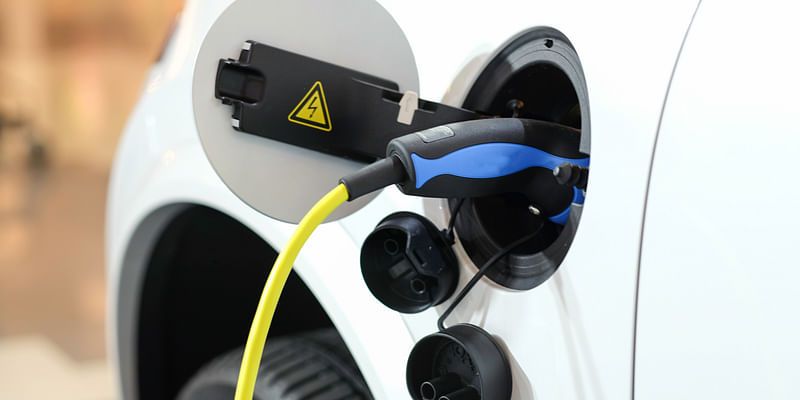Sunny days ahead: India’s e-mobility to continue on growth trajectory in 2024
E-mobility basked in a lot of investor attention in FY23, with companies raising over half a billion dollars. The year 2024 is only going to get better, say industry experts.
With major policy overhauls, the industry-defining initial public offering of , and increasing investor interest in the sector on the anvil, 2024 is set to become a defining year for the Indian electric mobility industry.
The EV sector raised over half a billion dollars—$667.9 million to be precise—in the first 10 months of 2023, with leading two-wheeler makers including , Ola Electric, and bagging multimillion-dollar rounds, according to YourStory data.
Even EV-adjacent companies—those not directly involved in the manufacturing of e-vehicles—such as charging infrastructure companies (, ), battery recycling, financing platforms etc, raised a mix of big and small cheques in 2023.
Although the sector is still quite young, e-mobility will remain an investor favourite in 2024 despite turbulence on the supply chain and regulatory front, say analysts and industry experts.
Mayuresh Raut, Co-founder and Managing Partner at Seafund, an early-stage investor, says this year could see a lot more investors enter the e-mobility space as valuations become less frothy.
“There has been a lot of reorientation over the last few months in the valuations of EV companies. Valuations at the peak of the funding season last year were looking very unreasonable, but they’ve settled and are looking reasonable now,” says Raut.
Anita Rehman, partner at Celesta Capital, says that while late-stage deals—Series A and upwards—will be struck, investors will “favour established businesses showcasing robust growth metrics.”
Smaller cities, commercial EVs to drive growth
Over the last two years, a majority of the growth in the sector was driven by two-wheeler manufacturers.
Despite sales growing severalfold, EVs still constitute only 5% of the total two-wheeler market. The lack of EV takers in non-Tier I cities have been directly responsible for this gap.
India’s smaller cities, all this while, have relied on petrol-run scooters. Up until now, that is, when a rising number of EV manufacturers have helped reduce the price of EV two-wheelers, making them more affordable.
“E-scooter prices have dropped in the last year mostly in smaller cities because of the rise of regional EV scooter makers. Expect to see a lot more towns and villages to go electric in 2024,” says an ICRA analyst. While the analyst was not able to quantify the drop in the prices, he added that there have been several instances where electric scooters were priced on par with their petrol counterparts.

Ather Energy, whose scooters retail for upwards of Rs 1 lakh, said last year that 54% of its sales come from Tier II and III cities generally and that it hopes to further increase its foothold in those geographies.
Between January and October 2023, 6.88 lakh EVs were sold in India, compared to 4.98 lakh in the calendar year 2022, according to Vahan, the Ministry of Road Transport and Highways website.
Commercial vehicles have started gaining traction too, particularly with the government set on electrifying public transport such as buses and autos.
Logistics players and last-mile delivery companies have been switching over to electric vehicles, in conjunction with startups such as Electric that provide vehicles and drivers—and this will pan out more meaningfully in 2024, says Seafund’s Raut.
“We believe growth in the EV sector in 2024 will be largely driven by B2B businesses on the commercial side,” he adds.
Policy shifts
The conclusion of Phase II of the government's Faster Adoption and Manufacturing of Electric Vehicles scheme (FAME) on March 31, 2024, has sparked much speculation regarding the future structure of subsidies in the EV sector, with the industry divided over what it portends for the next phase of the programme.
Overwhelmingly though, it is expected that FAME III will provide subsidies to boost the country’s charging infrastructure either directly to private entities, or via public-private partnerships.
“The charging infrastructure ask relates not only to direct charging stations and points, but also swapping infrastructure since that is what the commercial mobility (especially two- and three-wheeler last mile delivery) ecosystem will depend on,” says Seafund’s Raut.
YourStory had exclusively reported last year that there were draft proposals in front of the government to discuss bringing the EV charging infrastructure under the purview of the FAME III scheme.

The Federation of India Chambers of Commerce and Industry (FICCI) has also petitioned the Ministry of Heavy Industries (MHI) to invest Rs 30,000 crore over the next five years towards incentivising EV adoption and manufacturing.
Beyond FAME II, the industry hopes to see some sort of development on the battery technology, as well as the charging standard front.
Indian operators have long discussed implementing a universal charging standard to make interoperability and access to charging points as ubiquitous as locating a petrol station. In the US, this played out last year when several automakers came together to adopt Tesla’s charging connector specs.
Domestically, the government has implemented the Open Charge Point Protocol—commonly known as ‘OCPP’—but there’s still confusion around its implementation and procedures and protocols when it comes to updating the charging points.
“Any (policy) changes will likely adopt a more targeted approach, refining incentives and addressing identified gaps. These new regulations will pivot towards enhancing support mechanisms for EVs, with a particular emphasis on bolstering charging infrastructure and battery technology,” says Dr Anshul Gupta, Managing Director, Okaya Electric Vehicles.
Growth in EV ancillary companies
Seafund's Raut anticipates that as the initial batch of EV batteries completes its first lifecycle this year, the spotlight will shift toward battery recycling companies, positioning them as one of investors’ flavours of the season.
The need for sustainable disposal methods of batteries, as well as setting up a circular economy model within the EV sector will further spur activity and investments in battery recycling companies, says Atul Gupta, Co-founder of e-Sprinto, an EV two-wheeler manufacturer.
Further, entrepreneurs interested in a piece of the e-mobility pie will likely approach it from the battery chemistry perspective, innovating to find ways to reduce India’s dependency on lithium, which has to be imported from foreign countries, and instead experiment with alternative chemistries such as sodium-ion.
Raut says EV component manufacturers have also been increasingly looking to indigenise their supply chains in a bid to bring to overall cost of EVs down, and a lot of those efforts will pay off in 2024 as prices fall and more form factors of electric vehicles become affordable.
“The diversity in demand across various market segments positions these ancillary companies to thrive, and as the country continues to encourage a domestic value chain in the EV sector we envision that this will only continue to grow,” says Celesta Capital’s Rehman.
Four-wheelers gain traction, supply chain hits a speed bump
The EV frenzy may have caught the attention of two-wheeler drivers, but four-wheeler drivers have largely been left to contend with expensive options—up until now.

With Tata leading the charge to introduce economic EV car models, including the recently launched Punch EV, expect to see a lot more green-plate cars zooming past on Indian roads.
The four-wheeler EV segment in India constitutes a meagre fraction of total car sales in India in 2023—just 1.5% of the 4-5 million that were sold. EV cars have seen few takers largely because of the significant premiums they command over combustion engine vehicles.
Carmakers (OEMs) are keeping their fingers crossed for FAME III to provide some sort of incentives and subsidies to four-wheelers, just as they did two-wheelers.
“Learning from the US where electric vehicle adoption faced setbacks due to the OEMs manufacturing larger and costlier models, it is essential to recognise that delivering affordable vehicles is necessary to ensure wider adoption for electric four-wheelers in India,” says Celesta’s Rehman.
Accessing loans and credit to purchase EV cars is also expected to get easier this year with DFIs and formal financial institutions having realised the ROI opportunities presented by the sector.
However, despite several positive developments in the EV sector this year, the supply chain could pose significant challenges.
“Indo-China relations have been souring for quite some time and China sees India as a contender (in the EV sector). Some of this geopolitical volatility could spill over into the sector and hit the supply chain for critical components like cells and motors,” says an ICRA analyst.
“The industry heavily relies on lithium imports, and any disruptions in the supply chain could have a significant impact. To mitigate this risk, it is imperative to focus on indigenous lithium production and ensure a stable supply of this critical resource,” adds Okaya’s Gupta.
Thanks to the government’s efforts in encouraging localisation of the EV supply chain, these hits could be limited, but remain at the top of the industry’s list as potential headwinds in 2024.
Overall, the sector looks flush for growth, with several green shoots, and will likely remain robust this year.
Edited by Affirunisa Kankudti














![[Weekly funding roundup April 20-26] VC investment dips as startups resort to debt capital](https://images.yourstory.com/cs/2/220356402d6d11e9aa979329348d4c3e/funding-lead-image-1669386008401.jpg)